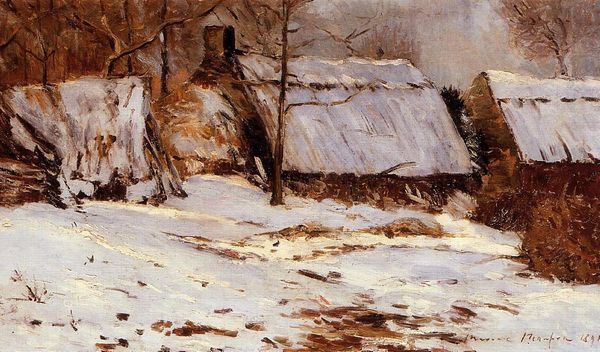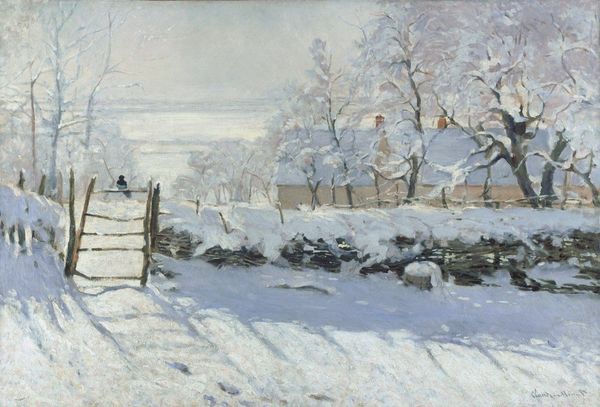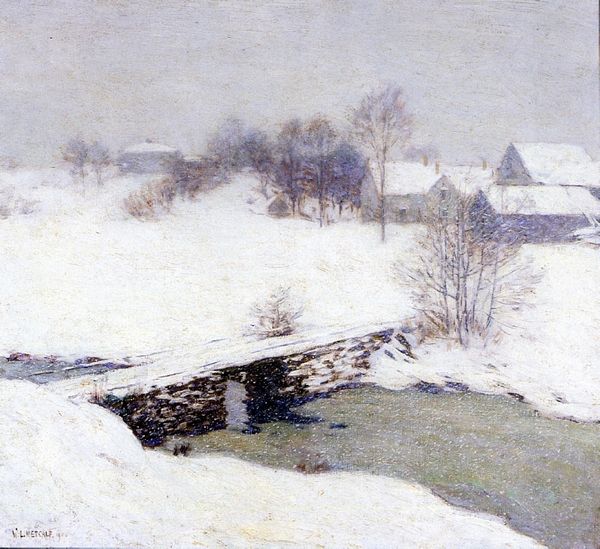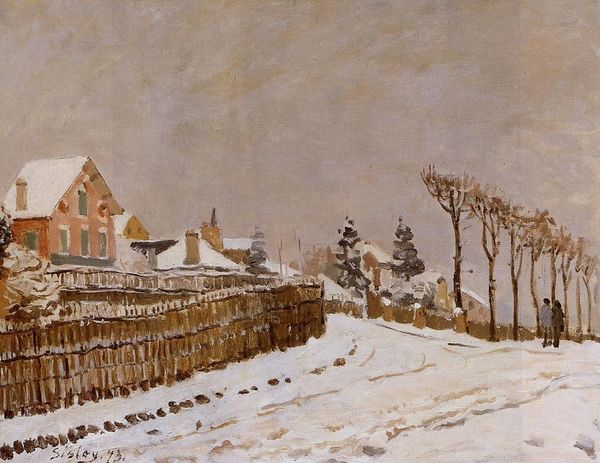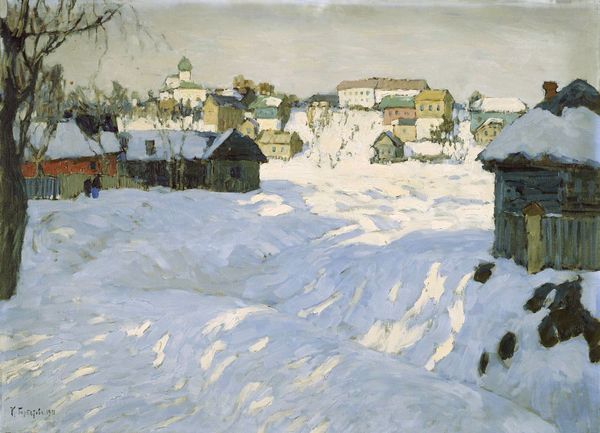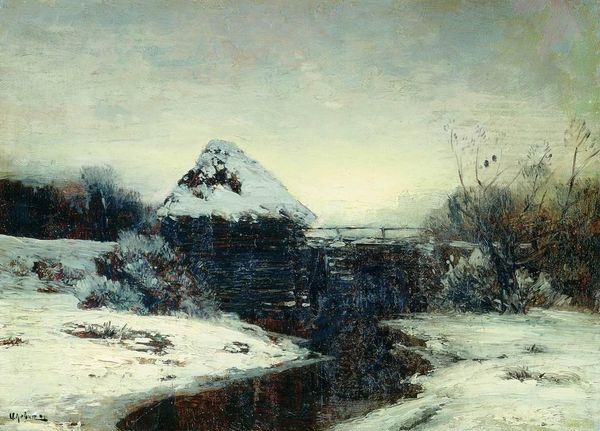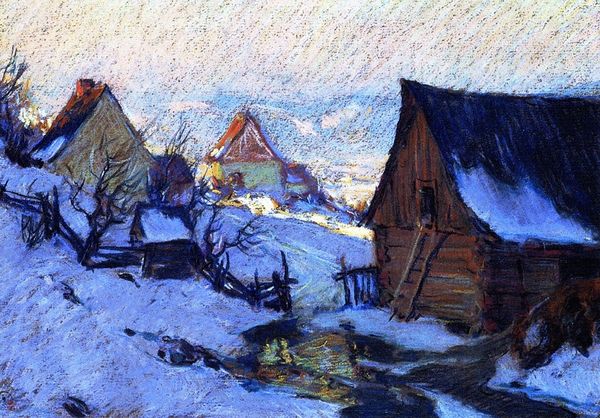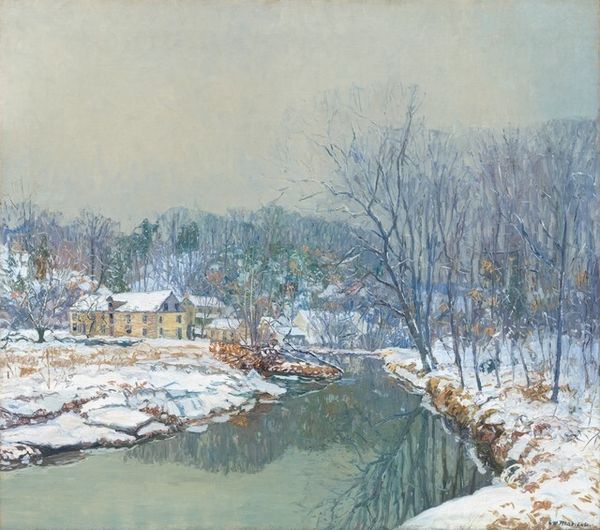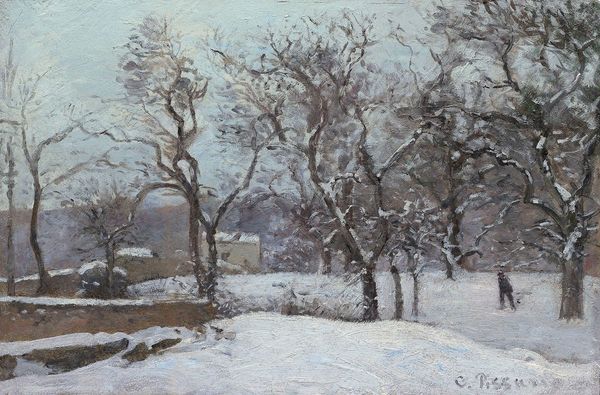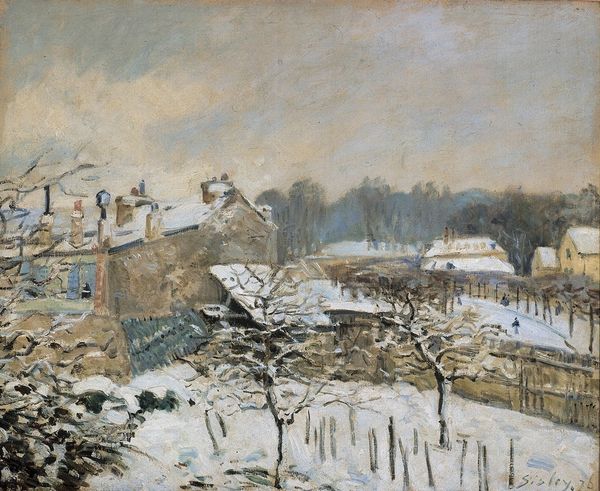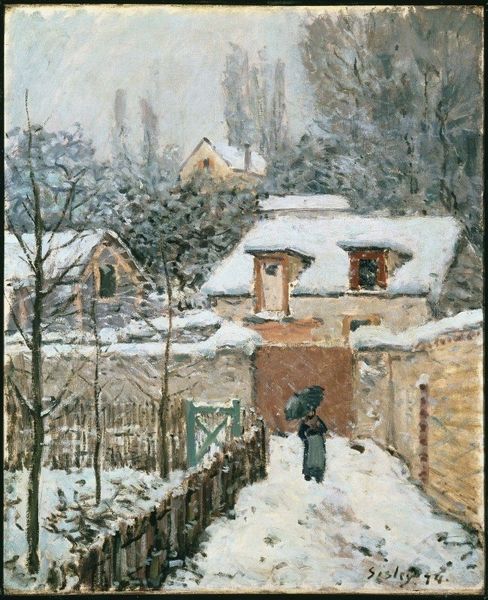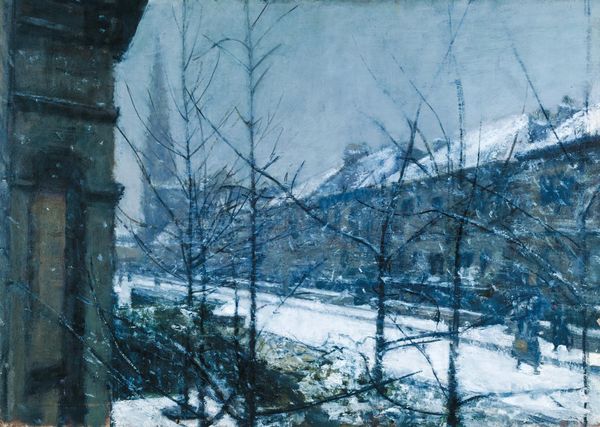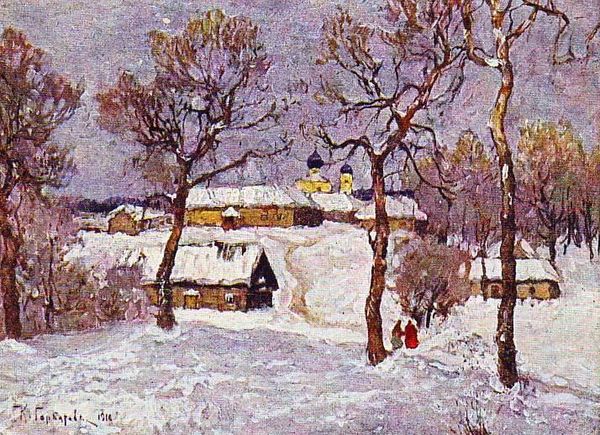
Copyright: Public domain
Curator: As we consider Maxime Maufra’s "Cottages in the Snow," painted in 1891, what is your immediate reaction? Editor: Bleak, almost monochrome, but there’s a peculiar charm in its desolation. It feels as though the biting wind itself is rendered onto the canvas. Curator: Interesting observation. From my perspective, Maufra’s focus is distinctly on the physicality of the scene. The thick impasto of the oil paint, the visible brushstrokes – these aren’t just representations of snow and architecture. They’re the tangible, material presence of winter, almost like the scene's own texture made real. Think of how crucial plein-air painting was becoming! Editor: That's definitely visible. And those buildings; they feel significant to understanding landscape in late 19th-century rural life. They're not grand structures, they are instead quotidian architecture blanketed in a layer of snow, revealing a certain truth of living during the wintertime. Curator: Exactly! Consider the socio-economic factors present: homes providing meager refuge against harsh climates. These rural scenes helped to define landscape painting beyond mere depictions to documents. Also consider Maufra’s own career shift toward impressionism, indicative of how even landscape underwent immense stylistic changes by the close of the century. Editor: You are right to remind me about Maufra's position in art history. He helped to move from one school to another... a bridge in how painters were representing landscapes... It strikes me how his technique contributes toward a shared feeling of being caught in-between different moments in history, similar to how that small human figure seems to find herself alone between homes. Curator: And the materials available impacted artistic practice in no small measure, and it's this sort of perspective through which we can gain an even clearer picture. Editor: A powerful example, it seems, how the landscape, artist and viewer are brought into new understanding of place and social reality. Thank you! Curator: Thank you as well! It is fascinating how paintings continue giving new perspectives on both making and context.
Comments
No comments
Be the first to comment and join the conversation on the ultimate creative platform.
